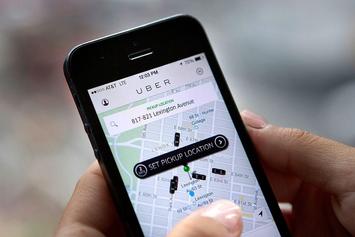
The rise of automation and artificial intelligence is keeping many Americans up at night, worrying about their jobs, and certainly those of their children. The World Bank predicts that 57 percent of all jobs in developed countries could be automated in the next two decades. Some studies suggest that almost half of all current jobs will be made redundant while others suggest that past technological innovation created enough new jobs to make for those lost.
And indeed, with record low unemployment, the real question, at least for now, lies in the quality of jobs, and whether people will be buying homes or starting families with their income. Nothing raises this issue more than the rise of the contingent “gig” economy, which has over 7 million members in the United States alone in 2018, a 26 percent increase compared to the previous year. Research reveals that 20 to 30 percent of the working-age populations in the United States and the EU-15, or up to 162 million individuals, engage in part-time contract work. Such part-time work has been growing rapidly, accounting for roughly 20 percent of the workforce in the U.S. and Europe and is expected to grow substantially over the next decade, notes McKinsey.
Some progressives, including Chris Lehane and David Plouffe, who managed Barack Obama’s 2008 campaign, cast the “gig” or “sharing” economy as “democratizing capitalism” by returning control of the working day to the individual. They point to opportunities the gig economy provides for people to make extra money using their cars or homes as a balm for the middle class. The image of companies like Uber and Lyft are ones of moonlighting drivers saving up for a vacation or expensive date, which does seem the ultimate win-win.
Who are the gig workers?
In principle, the gig economy provides great services — Uber and Lyft are rapidly changing urban transport in some positive ways. For those who are generally highly educated, and “share” to make a little money, the system works great. But for those who rely on such income for their livelihoods, notes Juliet B. Schor, a sociology professor at Boston College who interviewed gig workers, the picture is much grimmer and dissatisfaction far higher.
Clearly most gig workers are not doing well. One survey of workers in 75 countries found that most earned less than minimum wage, including in the United States, leading one observer to label them “the last of Marx’s oppressed proletarians.” Roughly half of California’s gig workers struggle with poverty.
The reasons for this are not hard to figure out. Gig workers lack many basic protections that full-time workers might have, for example, in enforcement of civil rights laws. Workers without representation, or even set hours, lack many of the tools needed to protect their own position; they are essentially fungible, like day laborers anywhere. Former Secretary of Labor Robert Reich has gone so far as to label the “sharing” economy as the “share-the-scraps” economy.
Some new gig workers have replaced people with regular work, such as hotel workers or taxi drivers, some of whom have been driven to despair as their ridership has declined. Many taxi and limo drivers spent their life’s savings on medallions that are now increasingly worthless; there have been at least six suicides of these drivers in New York City since Uber took command of the streets.
Is this the future of work?
Ultimately the gig economy, even as it uses the latest technology, represents something of a devolution of labor. Although widely associated as “progressive,” the arbiters of the gig economy are, perhaps unconsciously, recreating the conditions that led to the impoverishment of the peasants and mechanics — replaced by slaves — at the end of the Roman Republic, or what befell artisans whose livelihoods were destroyed in the 19th century by machines.
This is very different from the working class we have known since the 1940s, many of whom enjoyed stable working conditions, decent pensions and became homeowners. Able to work enough to perhaps pay their rent, most gig-ers may never earn enough to buy a home or start a business. In this respect these workers resemble increasingly high-tech version of serfs, free legally but locked in a system that offers little hope for upward mobility. They may tout the independence that the gig jobs give them, notes one observer, but there’s “an algorithm in control.”
And longer term, at least for many jobs, only the algorithm will survive. People may still work, at least on occasion, but hardly enough to support themselves, much less a family. This is one reason why so many high-tech executives favor a guaranteed national wage to keep the peasants away from their pitch forks.
Already, according to one poll, nearly half of Americans support up to a $2,000-a-month stipend for the unemployed or underemployed. Soon we can share a future that all but guarantees lucre beyond the wildest imagination for the handful who are on the other side of the computer interface, but leave most of us dependent on the kindness, or enlightened self-interest, of our masters.
This piece originally appeared on The Orange County Register.
Joel Kotkin is executive editor of NewGeography.com. He is the Roger Hobbs Distinguished Fellow in Urban Studies at Chapman University and executive director of the Houston-based Center for Opportunity Urbanism. His newest book is The Human City: Urbanism for the rest of us. He is also author of The New Class Conflict, The City: A Global History, and The Next Hundred Million: America in 2050. He lives in Orange County, CA.
Photo credit: Sandeepnewstyle from Wikimedia Commons












